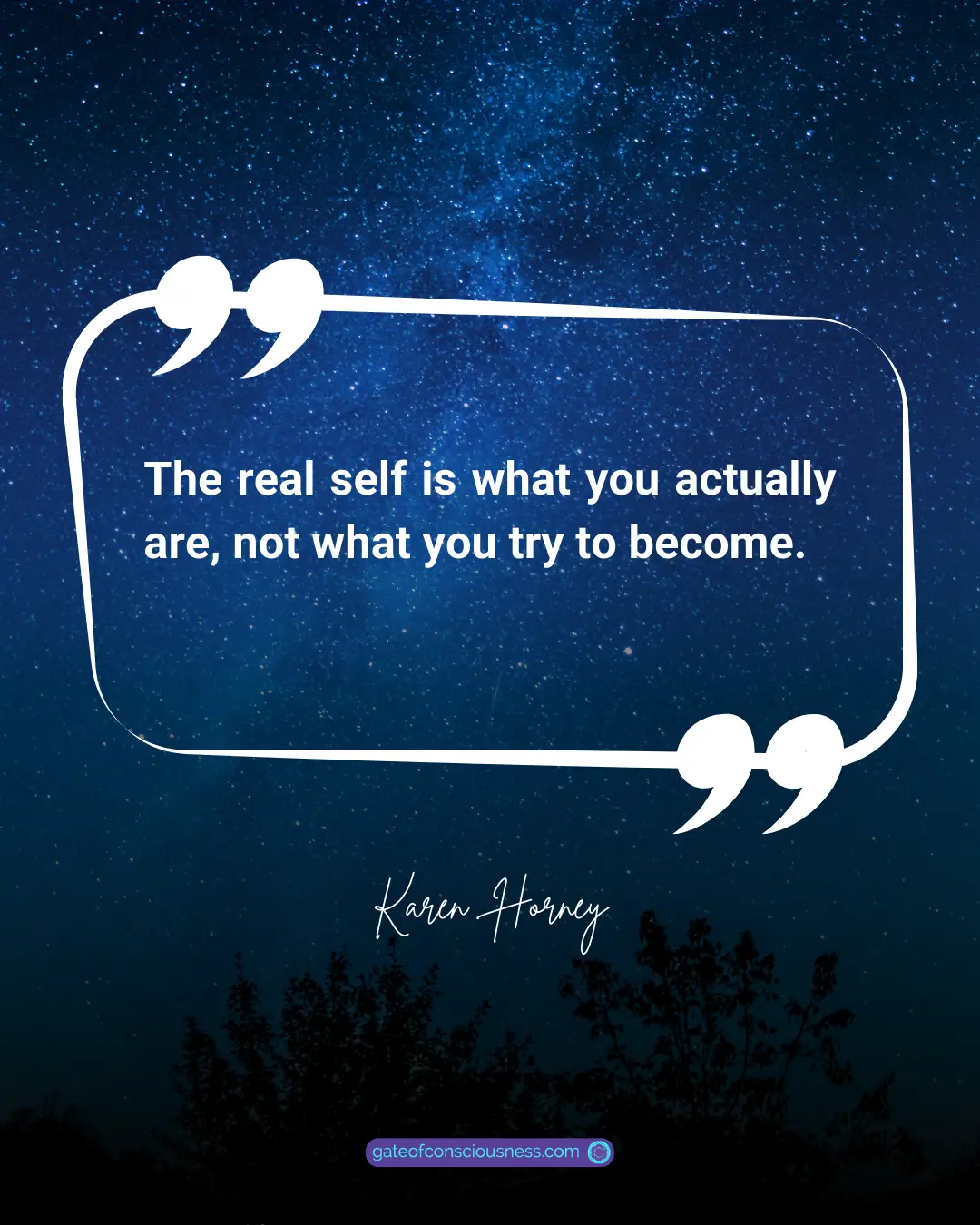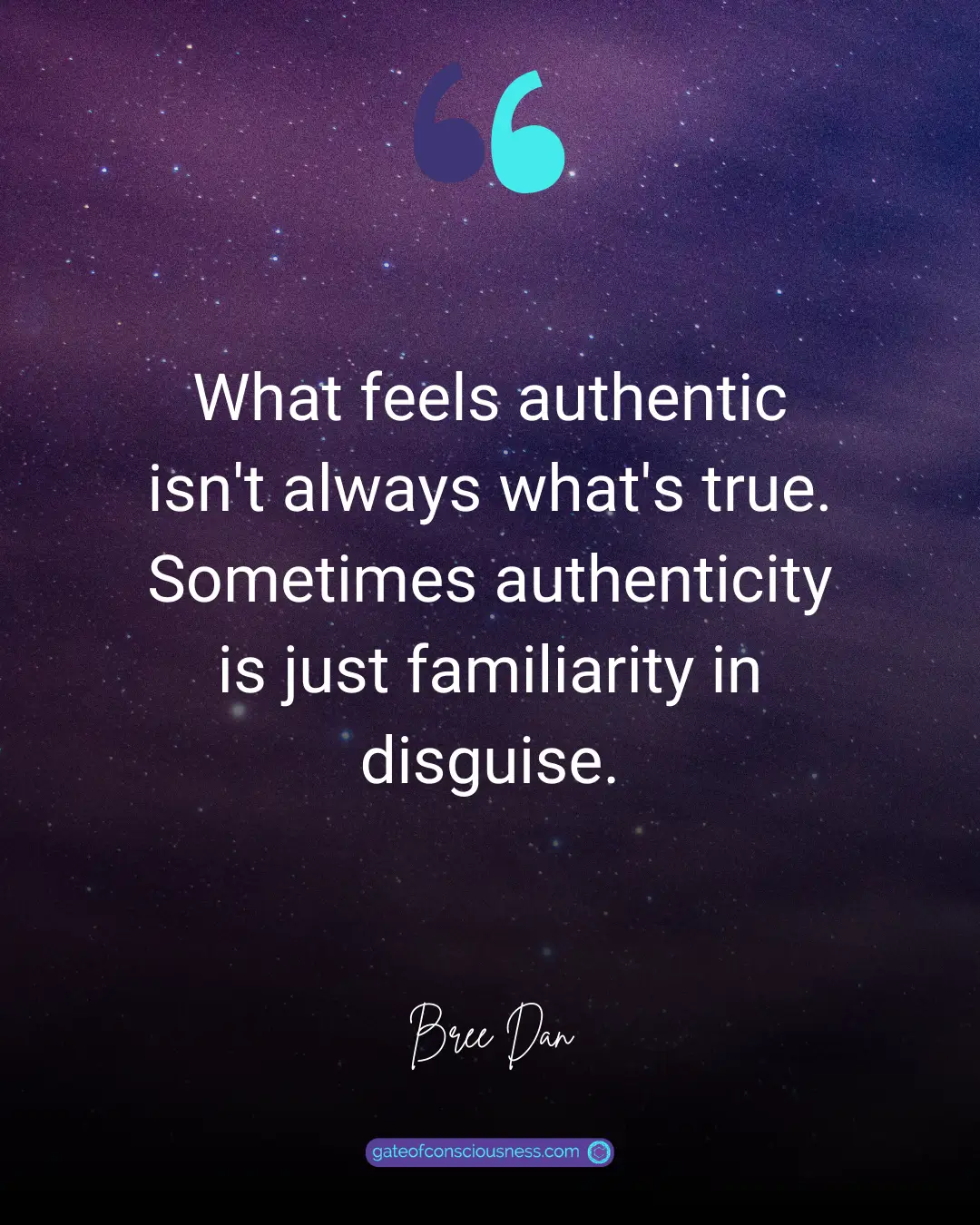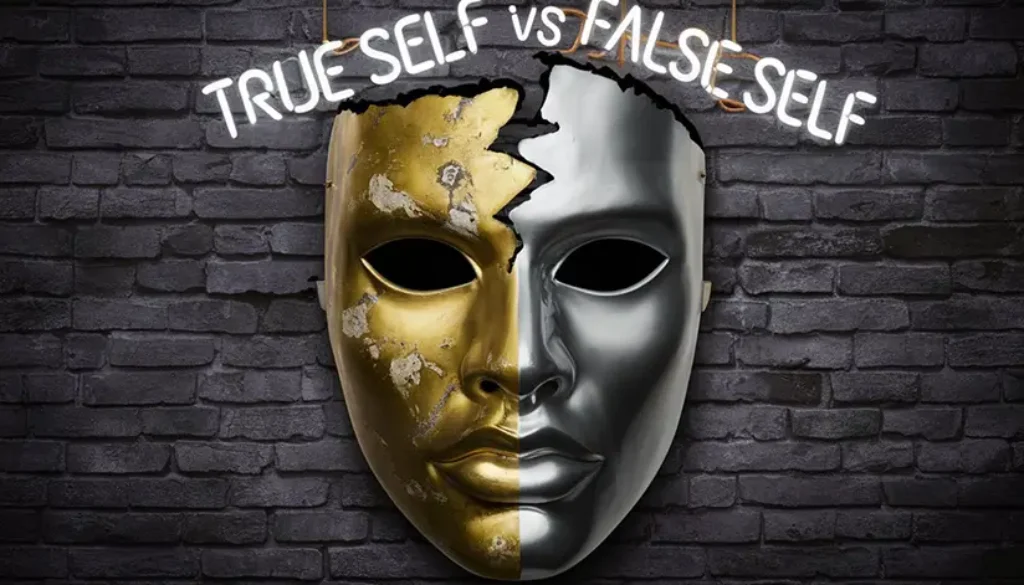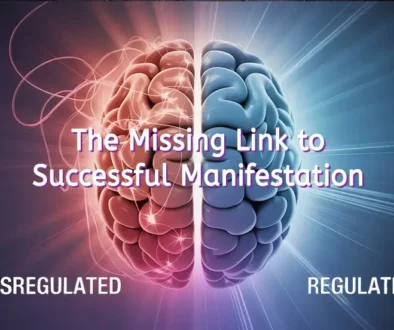True Self vs False Self: Breaking Free From The Authenticity Trap to Manifest Your Desires
You know that moment when you’re this close to a breakthrough – your manifestations are gaining momentum, opportunities are appearing, things are finally shifting – and then suddenly, a familiar voice pipes up: “This isn’t really me. I’m not being authentic.” Here’s a truth bomb: That voice? It’s probably not your authentic self talking. It’s your false self desperately trying to maintain the status quo. Ready to tackle the true self vs false self conundrum?
Table of Contents:
As a manifestation coach working with numerous clients, I’ve witnessed this pattern so many times it’s almost predictable:
Someone will be making progress, their manifestations starting to materialize, when suddenly they hit what I call the “authenticity panic.”
They start doubting themselves, questioning whether they’re being genuine, and retreating back into their comfort zone – all in the name of “staying true to themselves.”
But what if I told you that this version of authenticity is actually a carefully constructed cage?
Understanding True Self and False Self
Let’s get real about what we mean when we talk about the true self and the false self.
These concepts were first introduced by psychoanalyst Donald Winnicott. They’re fundamental to understanding why your manifestations might be hitting an invisible wall.
Your True Self isn’t what you think it is.
It’s not your personality traits, your likes and dislikes, or even your deeply held beliefs about who you are.
Instead, think of it as pure potential – a wellspring of creative energy and genuine impulse that exists before all the “shoulds” and “supposed tos” got layered on top.
The False Self?
That’s the sophisticated survival mechanism you’ve developed over years of living in the world. It’s the collection of behaviors, beliefs, and patterns you adopted to feel safe, to fit in, and to be accepted.
And here’s the kicker:
It’s so good at its job that you’ve probably mistaken it for your authentic self.
The Modern Authenticity Trap
Here’s where things get interesting (and a little uncomfortable).
We’re living in an era obsessed with “authenticity.”
Social media is flooded with calls to “be your authentic self,” usually accompanied by very specific ideas about what that should look like.
But here’s what I’ve observed working with my clients:
The more adamantly someone defends a particular trait or limitation as “just who I am,” the more likely it is to be a constructed aspect of their False Self.
Think about it – how many times have you said things like:
- “I’m just not a public-facing person”
- “I’m not good with money – that’s just me”
- “I could never be one of those confident people”
- “I’m not the type of person who attracts commitment”
- “I could never charge those prices for my services”
- “Being visible on social media just isn’t authentic to who I am”
- “I’m not naturally organized – that’s just how my brain works”
- “I’m too spiritual to focus on material success”
- “I’m just not cut out for leadership roles”
- “Being single is just part of who I am”
These statements feel true. They feel authentic. But they’re actually chains masquerading as truth, limiting beliefs disguised as self-knowledge.
Remember:
Your true self isn’t a fixed set of characteristics. It’s the infinite potential for growth and transformation. When you say “that’s just not me,” you’re not protecting your authenticity! You’re defending your limitations.
In manifestation, this misunderstanding of authenticity becomes a major block.
You can’t manifest a new reality while desperately clinging to an old identity. That’s like trying to drive forward while keeping one foot firmly on the brake.
Different Perspectives on True Self vs False Self
When we further explore the concepts of true and false self, we find fascinating parallels across psychology, spirituality, and manifestation work.
The Psychological Perspective
Karen Horney, a pioneering psychoanalyst, explored this dynamic in her 1950 book “Neurosis and Human Growth.” She viewed it through the lens of the “real self” versus the “ideal self.” The real self represents our current authentic state, and the ideal self represents our potential for growth.
This might sound similar to our manifestation work, but there’s a crucial distinction:
Horney saw how the pursuit of an idealized self-image could actually disconnect us from our authentic nature.

The Spiritual Journey Dimension
The spiritual angle adds another layer to our understanding. Across various traditions, we find striking similarities in how the true self is viewed:
In Buddhism:
The concept of “Anatta” (no-self) teaches us that what we think of as our identity is actually an illusion.
In Hinduism:
The “Atman” (inner essence, soul, or true self) is seen as our divine essence, waiting to be uncovered.
In Western Mysticism:
The true self is often described as the “divine spark” within.
These spiritual insights align perfectly with manifestation principles.
When we talk about becoming the person who already has our desires, we’re really talking about connecting with our true self – the part of us that already is whole and complete.
True Self vs False Self: Examples and Perspectives
Let’s explore how these differences manifest in everyday situations.
1. In Relationships
False Self:
- “I don’t need anyone; I’m fine alone” (protective mechanism).
- Overanalyzing the behaviors of others and creating stories about what they mean.
- Using “intuition” as an excuse to sabotage potential connections.
- Creating rigid rules about dating to maintain control.
- Pushing people away before they can reject you.
True Self:
- Acknowledging both independence and the desire for connection.
- Allowing relationships to unfold naturally.
- Staying open to possibilities without rigid expectations.
- Communicating needs and boundaries clearly..
- Trusting the natural flow of connection
Real Example:
One of my clients would constantly say her “intuition” was warning her about potential partners. Every time someone showed genuine interest, she’d find a “sign” that something was wrong – he took too long to text back, his zodiac sign wasn’t compatible, or the timing “felt off.”
Through our work together, she realized these weren’t intuitive hits at all – they were her false self’s protective mechanisms keeping her safely in her comfort zone of singlehood.
2. In Career and Business
False Self:
- “I should stick to safe, traditional paths” (fear-based choice).
- Abandoning projects the moment they feel challenging.
- Using “bad vibes” as an excuse to avoid growth.
- Staying in unfulfilling jobs because they are familiar.
- Refusing to charge what you’re worth because “it doesn’t feel authentic.”
True Self:
- Following genuine interests, even if unconventional.
- Viewing challenges as growth opportunities.
- Making decisions based on expansion rather than fear.
- Creating boundaries while maintaining connection.
- Allowing success to flow naturally.
Real Example:
I worked with an entrepreneur who kept sabotaging her business growth. Every time she approached a new level of success, she’d suddenly feel that something was “off” about her business direction.
She’d completely rebrand, change her offerings, or pull back from visibility – always justified with “following my intuition.”
Once we dug deeper, she realized these weren’t intuitive signals but her false self trying to maintain the familiar comfort of staying small.
3. In Self-Expression
False Self:
- Carefully curating an “authentic” image
- Only sharing the perfect, polished version of your story
- Hiding behind spiritual bypassing (“I’m too evolved for marketing”)
- Using “authenticity” as an excuse to avoid vulnerability
- Performing vulnerability rather than being genuinely vulnerable
True Self:
- Natural, spontaneous self-expression
- Sharing both victories and struggles
- Being genuine while maintaining healthy boundaries
- Allowing yourself to be seen in all your complexity
- Expressing truth without needing to control how it’s received
Real Example:
A content creator I worked with insisted she was “just being authentic” by never promoting her work or reaching out to potential collaborators. Her “authentic self” apparently didn’t do marketing.
Through our work, she discovered this wasn’t authenticity at all – it was her false self protecting her from potential rejection by keeping her work hidden.
4. In Personal Growth
False Self:
- Rigid adherence to self-improvement rules.
- Using spirituality to avoid dealing with real issues.
- Claiming “divine timing” when actually procrastinating.
- Getting stuck in endless preparation and learning.
- Using “alignment” as an excuse for inaction.
True Self:
- Organic evolution guided by inner wisdom.
- Balancing spiritual growth with practical action.
- Taking inspired action while trusting timing.
- Learning through doing and experiencing.
- Allowing both structure and flow.
The key to navigating these situations is developing discernment between true intuition and false self-protection.
True intuition feels expansive, even when it’s guiding you away from something. False self-protection feels constrictive and is usually rooted in fear.
Remember:
The false self isn’t malicious – it’s trying to protect you. But like an overprotective parent, it can keep you from experiencing the full richness of life.
The Death of the Old Self: A Necessary Transformation
If you’ve studied manifestation, you’ve likely encountered Neville Goddard‘s mystic teaching about how the “old man must die” for the new self to emerge.
This might sound dramatic (and maybe a bit existential), but it’s actually a great insight into how true transformation occurs.
Think about it:
Your sense of self, based on past experiences, has created what psychotherapy calls a “working model” of who you are.
This model might be dysfunctional, limiting, or even superficial, but it’s familiar. That’s why when we try to manifest significant changes, we often experience what feels like an identity crisis.
One of my clients described it perfectly: “It feels like I’m betraying myself by changing.”
This is your two selves – the old and the new – in conflict.
The real self, your true identity, is trying to emerge while the old patterns fight to survive.
Your False Self must die to allow a more authentic version of you to emerge.

Breaking Free: From False Self to True Self
1. Recognize the False Comfort
The first step in breaking free from your limited self-concept is understanding that what feels “authentic” isn’t always what’s true.
Many of us idealize parts of our current identity, mistaking familiarity for authenticity. This isn’t narcissism – it’s just human nature to defend what we know.
2. Mind and Body Integration
True transformation requires alignment of both mind and body. Here’s a practical exercise I teach my clients:
- Start with body awareness. Notice where you feel resistance physically when contemplating a change.
- Observe your thoughts without judgment.
- Allow spontaneity to emerge rather than forcing change.
3. The Spirituality Bridge
Creating a new self is more than psychological change. It’s a deeply spiritual process. Here’s how to approach it:
Daily Practice:
Spend 10 minutes each morning connecting with your vision of your expanded self.
Release Resistance:
When you feel the urge to retreat to old patterns, ask yourself: “Is this really my true self speaking, or my conditioned response?“
Trust the Process:
Remember that discomfort is often a sign of growth, not inauthenticity
4. Practical Implementation Steps
Here’s a structured approach to navigating this transformation:
Morning Intention Setting:
- Write down one aspect of your new self you’re embodying today
- Visualize yourself naturally expressing this quality
Throughout the Day:
- Notice moments when your old self tries to take control
- Practice responding rather than reacting
- Keep a small journal to track these moments
Evening Integration:
- Review your day’s experiences
- Celebrate moments of alignment with your true self
- Plan adjustments for tomorrow
Remember:
This isn’t about forcing change or creating a superficial new persona. You must allow your authentic self to emerge naturally while compassionately acknowledging the parts of you that fear change.
Transform False Self Thoughts into True Self Wisdom
False Self Says:
“I need to be perfect to be worthy”
True Self Knows:
“I am worthy exactly as I am while growing”
Success Stories: When the True Self Emerges
One of the most rewarding aspects of my work is witnessing the moment when clients realize that their true and false selves have been in a dance, and they finally choose to lead.
In manifestation work, the self must undergo a complete paradigm shift before external reality can reflect our desires.
This isn’t theory, I’ve witnessed it countless times:
- A client who believed her true self was “naturally shy” now confidently leads workshops for hundreds.
- An entrepreneur who thought he was “just bad with money” built a seven-figure business once he released his false money identity.
- A woman who believed being single was “just her authentic nature” manifested a loving relationship once she recognized this as a protective pattern rather than her true identity.
The common thread?
They all had to navigate the challenging space between their true self vs false self before their manifestations could materialize.
Integration and Moving Forward
The journey between your true and false selves isn’t a one-time event – it’s an ongoing dance of awareness and choice. Here’s how to maintain your momentum:
True Self vs False Self Daily Practices:
- Morning check-in: “Which self is driving my choices today?”
- Regular reality checks: “Is this resistance protecting me or limiting me?”
- Evening reflection: “Where did I choose expansion over comfort?”
Handling Setbacks:
- Recognize that temporary retreats into the false self are normal
- Use triggers as transformation opportunities
- Remember that discomfort often signals growth

True Self vs False Self: Your Next Steps
The path to manifesting from your true self rather than your false self begins with a single choice – the choice to question what you’ve always assumed was “just you.”
Here’s your action plan:
- Choose one “that’s just who I am” belief to challenge this week.
- Practice sitting with the discomfort of new possibilities.
- Start small – pick one area where you’ll allow yourself to expand.
- Connect with others on similar journeys.
- Celebrate each moment you choose growth over familiar limitations.
Your true self isn’t a destination – it’s an ongoing journey of expansion and discovery.
The false self would have you believe that you’re fixed and finite. But as you’ve learned, you’re far more expansive than any limiting belief system would have you believe.
Are you ready to begin this journey?
Your true self is waiting.
And unlike what your false self might say, you don’t have to have it all figured out to take the first step.
Ready to dive deeper into aligning with your true self?
Subscribe today and get access to exclusive resources, including guided meditations and workbooks designed to help you break free from limiting beliefs. Click here to begin your journey of authentic transformation.
FAQ About True Self vs False Self
What is an example of a real self?
What is an example of a false self?
What is the difference between false self and true self?
What are false self behavior traits?
How can contemplation and meditation help in understanding my true self?
How do I know if I'm operating from my true self or false self?
Can you manifest from your false self?
Can a false sense of self lead to dysfunctional behaviors?





